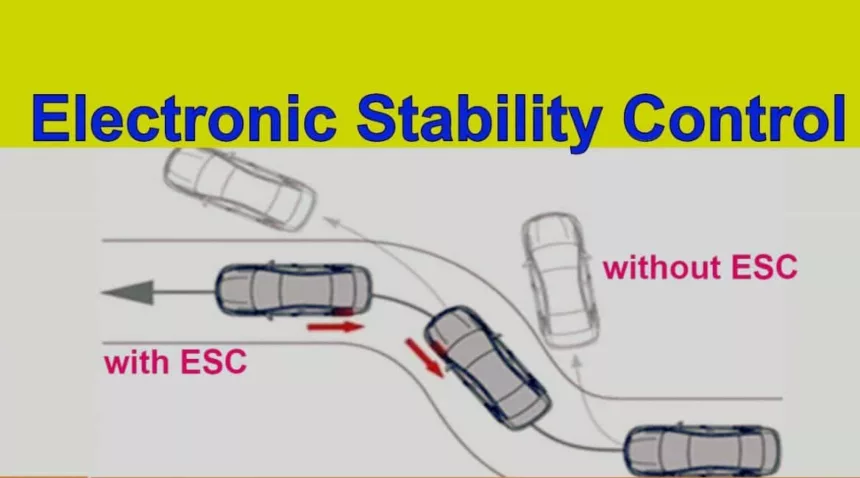Electronic stability control (ESC), sometimes known as electronic stability program (ESP), is a crucial safety feature that has significantly enhanced vehicle control and stability, particularly in challenging driving conditions. It has become a standard feature in most new vehicles, earning its place as one of the most effective automotive safety technologies introduced in recent decades. In this article, we will explore the origins, workings, and importance of ESC in modern vehicles.
The Genesis of Electronic Stability Control
To understand ESC, it’s important to trace its roots back to the late 20th century. As cars became more powerful and sophisticated, the need for a system that could prevent skidding and loss of control became increasingly evident. In the early 1990s, automotive engineers began developing a technology that revolutionized vehicle stability.
ESC, also known as Electronic Stability Program (ESP) or Dynamic Stability Control (DSC), initially made its debut in luxury cars. However, as technology advanced and its effectiveness became apparent, it quickly became a standard feature in various makes and models.
How Does Electronic Stability Control Work?
ESC is a computerized technology that enhances vehicle stability by detecting and reducing loss of traction. It achieves this by automatically applying brakes to individual wheels, helping the driver regain control in situations where the vehicle is beginning to skid or slide.
Imagine driving on a wet road and suddenly encountering a sharp turn. Without ESC, your vehicle might start skidding, making it challenging to maintain control. ESC intervenes by sensing the loss of traction and selectively applying brakes to specific wheels, mitigating the skid and restoring stability.
The system relies on a network of sensors that continuously monitor various parameters, including wheel speed, steering input, and lateral acceleration. These sensors feed real-time data to the ESC control module, which makes split-second decisions on when and how much braking force to apply to each wheel.
The Impact on Safety
ESC has become a game-changer in terms of vehicle safety. According to studies conducted by the National Highway Traffic Safety Administration (NHTSA), ESC has significantly reduced the number of single-vehicle crashes, particularly those involving rollovers. Its ability to prevent skidding and loss of control has made it an indispensable ally in avoiding accidents and saving lives.
Beyond its life-saving potential, ESC also enhances everyday driving safety. Whether navigating slippery roads, making abrupt lane changes, or tackling unexpected obstacles, ESC provides an extra layer of protection and reassurance for drivers.
ESC in the Technological Tapestry of Modern Cars
In the present automotive landscape, it’s rare to find a new car without ESC. The technology has become so integral to vehicle safety that many regulatory bodies worldwide have mandated its inclusion in all new vehicles. As a result, whether you’re driving a compact sedan, a rugged SUV, or a high-performance sports car, chances are you’re benefiting from the stabilizing influence of ESC.
As technology continues to advance, we can expect further refinements and enhancements to ESC. Manufacturers are continually working to integrate it with other safety systems, creating a seamless web of protection for drivers and passengers alike.
The Future of ESC: What Lies Ahead?
Looking ahead, the trajectory of ESC suggests that it will remain a cornerstone of vehicle safety. However, with the rise of autonomous driving technology, the role of ESC may evolve to complement and enhance these emerging systems. Imagine a future where ESC seamlessly collaborates with self-driving algorithms to ensure not just stability during human control but also optimal safety during autonomous operation.
Moreover, the integration of ESC with vehicle-to-everything (V2X) communication could further enhance its capabilities. Picture a scenario where your car receives real-time data about road conditions, upcoming obstacles, and the driving behaviour of nearby vehicles, allowing the ESC system to proactively anticipate and respond to potential challenges.
Conclusion
In conclusion, Electronic Stability Control has emerged as a linchpin in the realm of automotive safety. Its ability to prevent skidding and loss of control has significantly contributed to reducing accidents and improving overall road safety. As we traverse the ever-evolving landscape of automotive technology, one thing remains certain: ESC will continue to be a vital force, ensuring that every journey is not just efficient but, most importantly, safe.










